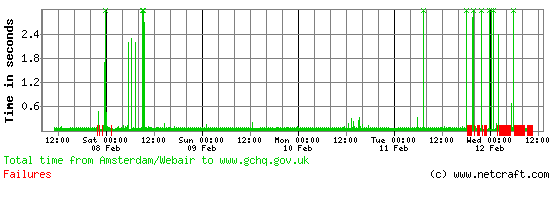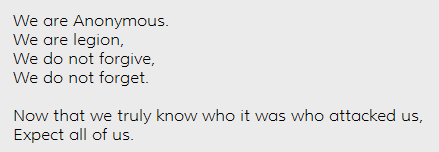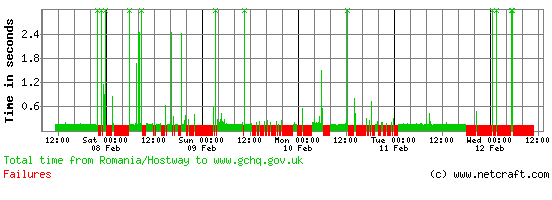GCHQ’s website at www.gchq.gov.uk is exhibiting some noticeable performance issues today, suggesting that it could be suffering from a denial of service attack.

Last week, documents from whistle-blower Edward Snowden revealed that GCHQ carried out denial of service (DoS) attacks against communications systems used by the hacktivist group Anonymous during their own Operation Payback, which itself involved carrying out denial of service attacks against high profile websites such as MasterCard, Visa, Amazon, Moneybookers, and PostFinance.
This caused some furore amongst supporters of Operation Payback, some of whom were tried and convicted for carrying out denial of service attacks. Denial of service attacks are illegal in the UK under the Police and Justice Act 2006, yet the leaked slides suggest that GCHQ may have used such techniques against Anonymous, resulting in 80% of IRC users leaving within a month.

Part of a statement published by Anonymous on AnonNews.
Following these revelations, a statement on GCHQ’s war against Anonymous was posted on the AnonNews website. The statement ends with a suggestion that some kind of retaliation could be expected: “Now that we truly know who it was who attacked us, Expect all of us.”
Twitter accounts associated with Anonymous also fuelled suggestions that they could be responsible for GCHQ’s website woes, with some referring to the #TheDayWeFightBack hashtag.
http://t.co/FCYJFlYAHr is still #TANGODOWN
We are anonymous.
It is far to late to expect us. pic.twitter.com/PVbTunXjqt
— AnonOpsCenter (@AnonOpsCenter) February 12, 2014
Curiously, a much larger amount of downtime has been observed from Netcraft’s Romanian performance monitor since the leaked slides were made public. That could indicate much more extreme DDoS mitigation techniques are being applied to these requests, and this in turn suggests that if an attack is occurring, perhaps Romania is one of the countries from which the attacks are being launched.

The www.gchq.gov.uk website is served from a content delivery network run by Limelight Networks, who claim to be one of the world’s largest, best performing, and most highly available content delivery networks. Although it remains hosted at the same location, the website changed its Server header from “WebServer” to “EdgePrism/4.1.2.0” earlier this week. Limelight Networks first unveiled EdgePrism in 2001, so any similarities to the name of the NSA’s PRISM mass electronic surveillance program are presumably coincidental.